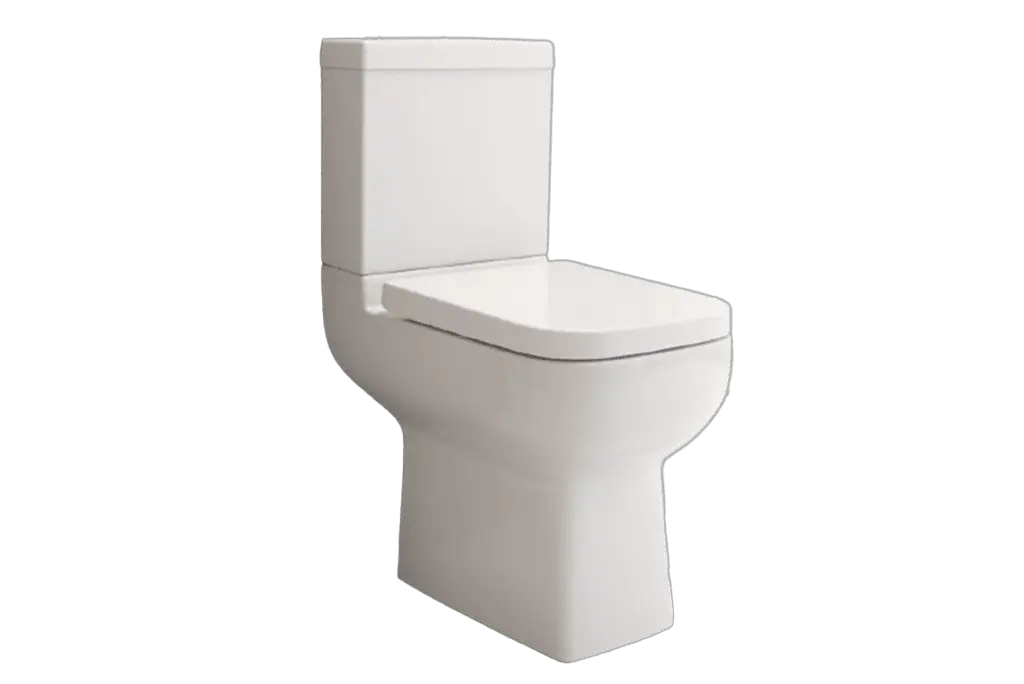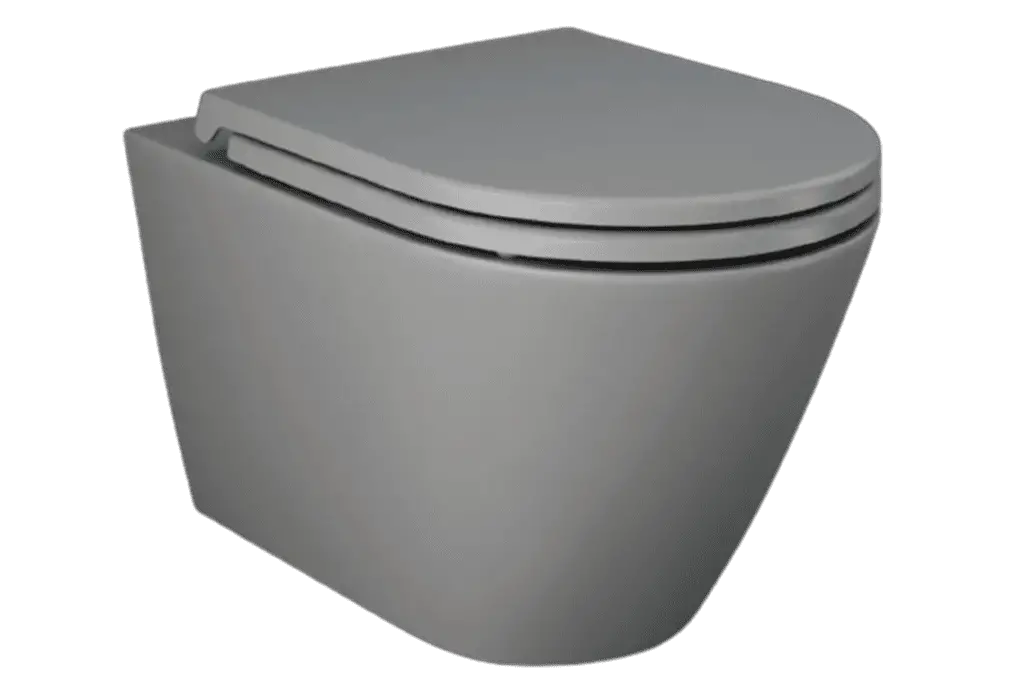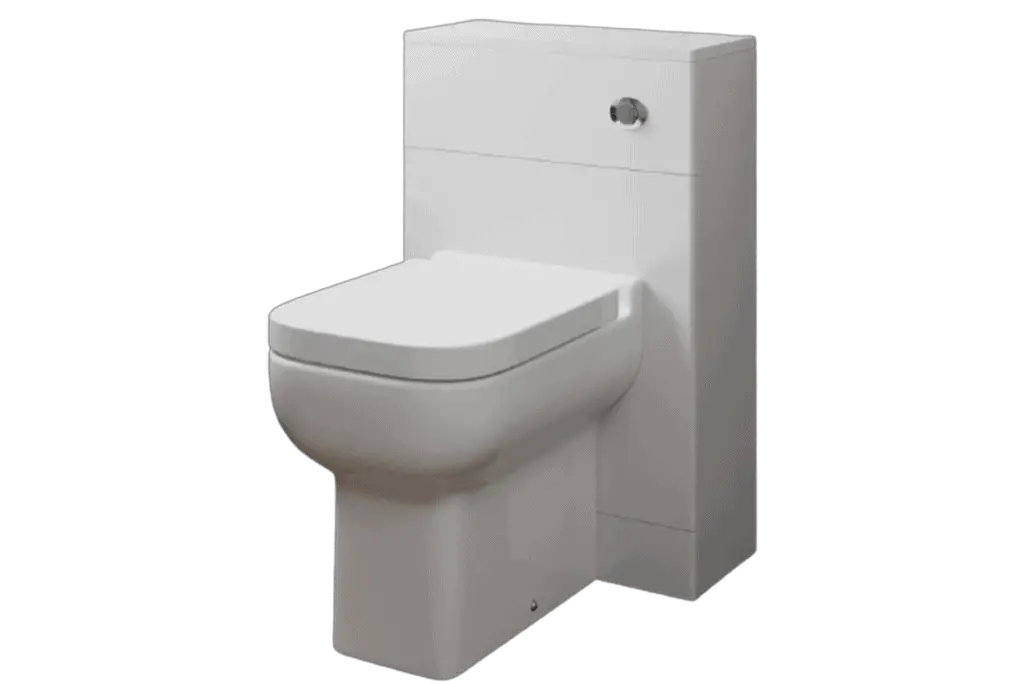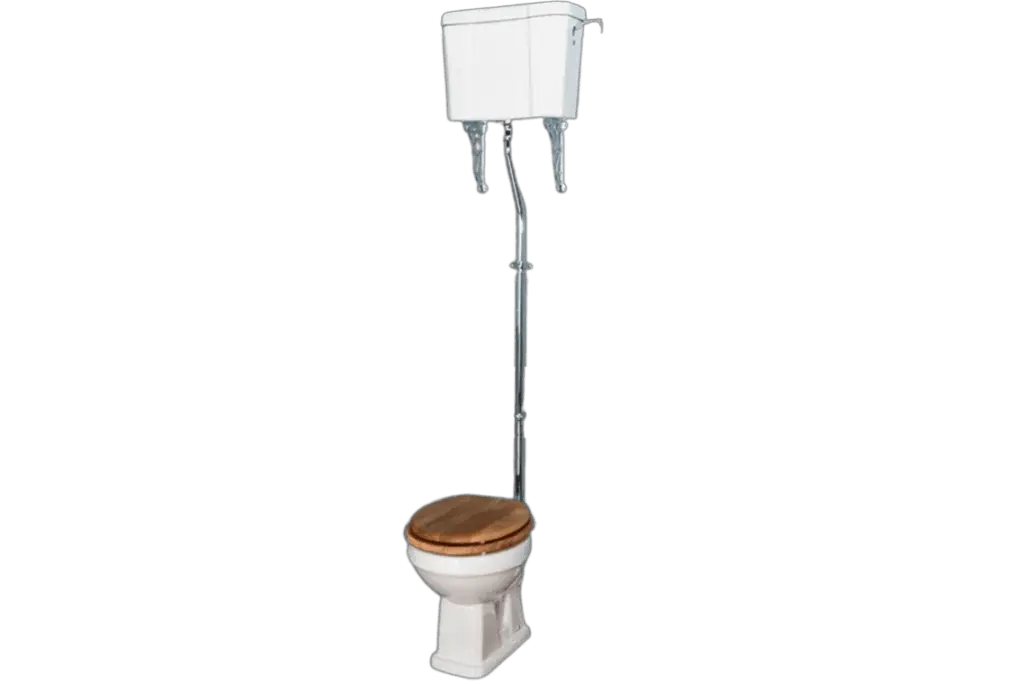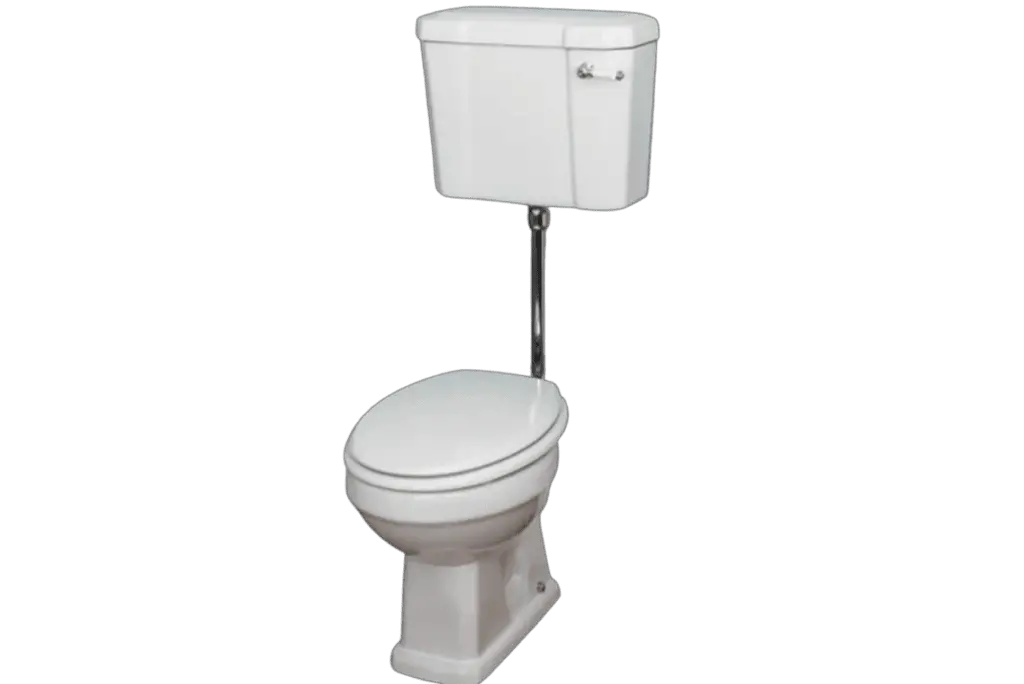You probably don't give much thought to your toilet until something goes wrong. But understanding how your toilet works can help you diagnose problems and make simple repairs yourself. Let us take a closer look at the inner workings of your toilet and explain everything you need to know about how your toilet works to keep it running smoothly.
A toilet functions by flushing a cistern filled with water into a toilet pan that connects to a drainage system. Upon activating the flush, water is released from the toilet cistern into the toilet bowl, resulting in the expulsion of waste and water through a trap and into the sewer system.
Your toilet is a simple yet ingenious device that uses gravity and water pressure to flush waste away. When you push the handle, a rod lifts a diaphragm, allowing water to rush from the tank into the bowl. This sudden rush of water creates a siphon that pulls waste and water from the bowl into the drainpipe and out of your home. The tank then refills with water, ready for the next flush.
Table of Contents
What Are The Basic Components of A Toilet
Your toilet has several basic components that work together to flush waste away. These include:
- Cistern: The cistern holds water and is located behind the bowl.
- Bowl: The bowl is the part of the toilet you sit on and where waste goes.
- Trap: The trap is a curved bowl holding water to stop bad smells.
- Fill valve: The fill valve controls water flow into the tank after you flush.
- Flush valve: The flush valve is a rubber stopper that keeps water in the cistern until you flush. (this part is on push-button toilets only).
- Syhpon: When the handle is pulled it syhpons the water up which starts the flow of water into the bowel.
How Does Your Toilet Work?
When you flush your toilet, the handle lifts the flush valve, allowing water to flow from the cistern into the bowl. The water in the bowl and trap is then forced down the drain by gravity and the pressure of the water. As the water level in the cistern drops, the fill valve opens and refills the cistern with water ready for the next time the toilet is flushed.
The Different Parts Of A Toilet
Toilets may seem like simple fixtures, but they actually consist of several parts that work together to flush waste away. Understanding the different parts of a toilet can help you troubleshoot issues and make repairs more easily.
Cistern
The cistern is the top part of the toilet that holds the water used for flushing. It is usually made of porcelain or ceramic and is connected to the bowl via a large rubber gasket. Inside the tank, you'll find several parts, including:
- Fill valve: This valve controls water flow into the tank after a flush.
- Flush valve: This valve releases the water from the tank into the bowl during a flush.
Bowl
The bowl is the bottom part of the toilet that holds the water and waste. It is also made of porcelain or ceramic and is connected to the floor via a wax ring. The bowl contains several important parts, including:
- Trap: This is the P-shaped passageway at the back of the bowl that carries waste away.
- Rim holes: These are small holes around the bowl's rim that release water during a flush.
- Jet holes: These are larger holes located under the rim that release water with more force to help clean the bowl.
Other Parts
In addition to the tank and bowl, several other parts make up a toilet, including:
- Handle: The handle is located on the outside of the tank and is used to initiate a flush.
- Close Coupled Kit: is a metal plate and a large doughnut washer that sits between the cistern and the bowel creating a water-tight fitting to stop water leaking when flushed
- Seat: The seat is the part of the toilet you sit on. It is usually made of plastic or wood and is attached to the bowl with screws.
Understanding the different parts of a toilet can help you diagnose and repair issues more easily. If you're experiencing problems with your flush valve or your fill valve, it is essential to know how to replace them however if the problem is not them then it's important to know which other part is causing the issue so you can fix it correctly.
Different Types of Toilets
Toilets come in various types and designs, each with unique features and functions. Here are some of the most common types of toilets you're likely to encounter:
1. Close-Coupled Toilets
Close-coupled toilets are the most common type of toilet found in homes. They have a cistern that sits directly on the bowl, making it easy to install and maintain. The cistern is usually connected to the bowl by a short pipe called a close-coupled toilet.
2. Wall-Mounted Toilets
Wall-mounted toilets are popular for modern bathrooms as they save space and are easy to clean. They're fixed directly to the wall, and the cistern is concealed behind the wall. Wall-mounted toilets require professional installation, and maintenance can be challenging as the cistern is not easily accessible.
3. Back-To-Wall Toilets
Back-to-wall toilets are similar to wall-mounted toilets in that they're fixed to the wall, but the cistern is installed behind the toilet pan. They're a popular choice for those who want the sleek look of a wall-mounted toilet but don't want to go through the hassle of concealing the cistern.
4. High-Level Toilets
High-level toilets are classic, with a cistern high above the toilet bowl. They're often found in period homes and are a popular choice for those who want to add a touch of vintage charm to their bathroom. High-level toilets require professional installation and can be expensive to maintain.
5. Low-Level Toilets
Low-level toilets are similar to close-coupled toilets, but the cistern is mounted lower down on the wall. They're a popular choice for those who want a traditional look but don't have the space for a high-level toilet. Low-level toilets are easy to install and maintain, and replacement parts are readily available.
In conclusion, understanding the different types of toilets available can help you decide when choosing a toilet for your home. Consider factors such as space, style, and maintenance requirements when selecting a toilet that suits your needs.
How Does A Toilet Flush
When you press the flush button on your toilet, you trigger a complex series of events that ultimately result in waste being removed from the bowl and sent to the sewer system. Here's how it works:
- The flush valve opens: When you press the flush button, a lever or rod lifts the flush valve, a rubber washer that covers the hole at the bottom of the tank. This allows water to rush into the bowl.
- Water enters the bowl: The water that enters the bowl comes from the cistern, which has been filled with water from the main water supply.
- Water pushes waste through the trap: The water that enters the bowl creates a siphon effect that pulls waste through the trap and into the drain pipe. The trap is a curved section of pipe that holds water and prevents sewer gases from entering your home.
- The cistern refills: Once the flush valve closes, the cistern refills with water. This water comes from the main water supply and is directed into the cistern through a fill valve.
How Does A Toilet Refill After Flushing
After you flush your toilet, you may hear running water. This is the sound of your toilet refilling. But how does it work?
The fill valve refills the cistern with water after each flush. It is usually located on the cistern's left side or at the side of the cistern and is connected to the water supply line. When the fill valve opens, the cistern re-fills the cistern to the appropriate level.
Once the cistern is full, the float ball or cup rises with the water level and shuts off the fill valve, stopping the water flow.
It's important to note that if the water level in the tank is too high or too low, it can affect the performance of your toilet. If the water level is too high, water may overflow into the overflow tube and into the bowl, wasting water and potentially causing damage. The toilet may not flush properly if the water level is too low.
To adjust the water level in your cistern, you can adjust the float ball or cup. Most toilets have a screw or clip that allows you to adjust the float's position. By raising or lowering the float, you can adjust the water level in the tank to the appropriate level.
Common Faults With A Toilets
Toilets can develop faults that can cause inconvenience and discomfort. Here are some common faults that you may encounter with your toilet:
1. Clogged Toilet
A clogged toilet is a common problem for various reasons, such as flushing non-degradable items like sanitary pads, baby wipes, or excessive toilet paper. A clogged toilet can cause water to overflow onto the bathroom floor, making it a messy and unpleasant experience.
2. Leaking Toilet
A leaking toilet can waste a lot of water and increase your water bill. You can detect a leaking toilet by listening for running water or checking the water meter. Worn-out washers, damaged fill valves, or loose connections can cause a leaking toilet.
3. Weak Flush
Various factors, such as low water pressure, clogged pipes, or a faulty flush valve can cause a weak flush. A weak flush can be frustrating, as it may require multiple flushes to clear the bowl.
4. Phantom Flush
A phantom flush occurs when the toilet flushes itself without any input from the user. A phantom flush is usually caused by a faulty washer not sealing properly or a fill valve not working correctly.
5. Running Toilet
A running toilet can waste a lot of water and increase your water bill. A running toilet is usually caused by a faulty fill valve, which allows water to flow continuously into the tank.
FAQs About Everything You Need To Know About How Your Toilet Works
How does a toilet work?
A toilet uses gravity to move waste and water through a trap into a sewer line. When you flush the toilet, the flush valve opens, allowing water to flow from the cistern into the bowl. This water creates a siphon effect that pulls waste and water out of the bowl and into the sewer line.
What is a toilet trap?
A toilet trap is a curved section of the toilet's drainpipe that holds water and prevents sewer gases from entering your home. When you flush the toilet, the water in the trap is replaced with clean water from the cistern.
What is a toilet syphon?
A toilet syphon is a flush valve that syphons the water from the cistern into the bowl. When you flush the toilet, a diaphragm lifts up, allowing water to syphon into the bowl.
How does a toilet fill valve work?
A toilet fill valve is responsible for refilling the cistern after you flush. When the cistern is empty, the fill valve opens and allows water to flow into the cistern. Once the cistern is full, the fill valve shuts off.
What is a close-coupled toilet?
A close-coupled toilet is where the toilet cistern sits directly onto the toilet bowl and is connected with a close-couple kit consisting of a metal plate and a doughnut washer.
What is a close-coupled kit
a closed couple kit is a metal plate that connects to the cistern by the flush valve back nut which is then sat on to the toilet bowl with a doughnut washer, bolts with wing nuts are then used to hold the cistern down to the bowl
What is a low-level toilet
A low-level toilet is where the cistern is hung onto the wall behind the toilet bowl with a flush pipe connecting the cistern to the bowl.


